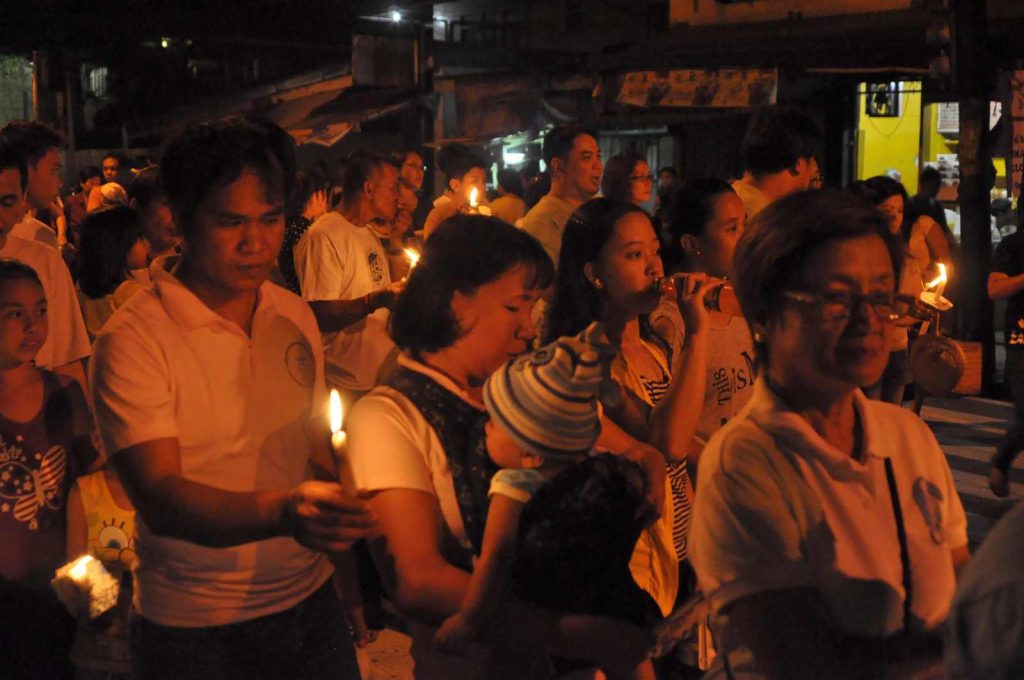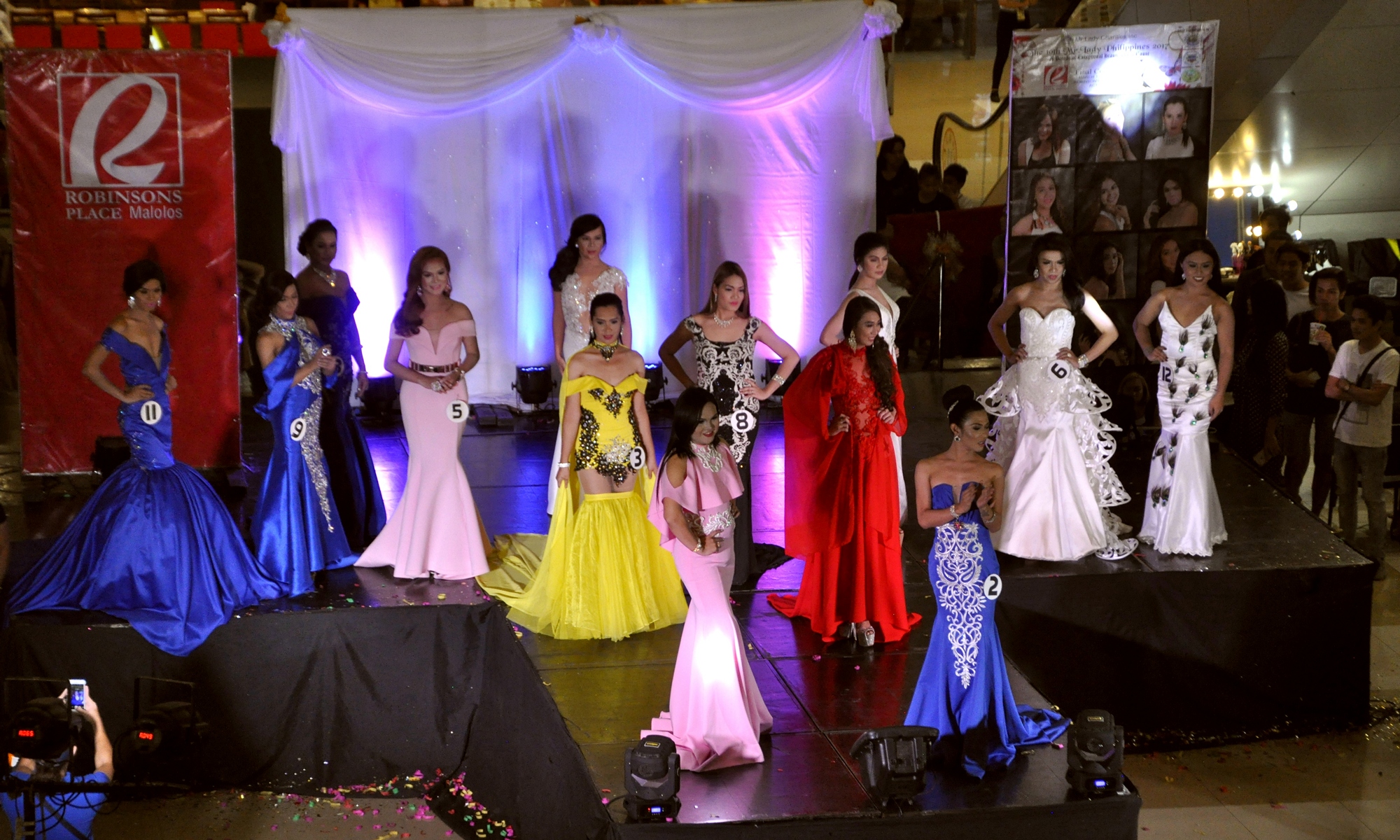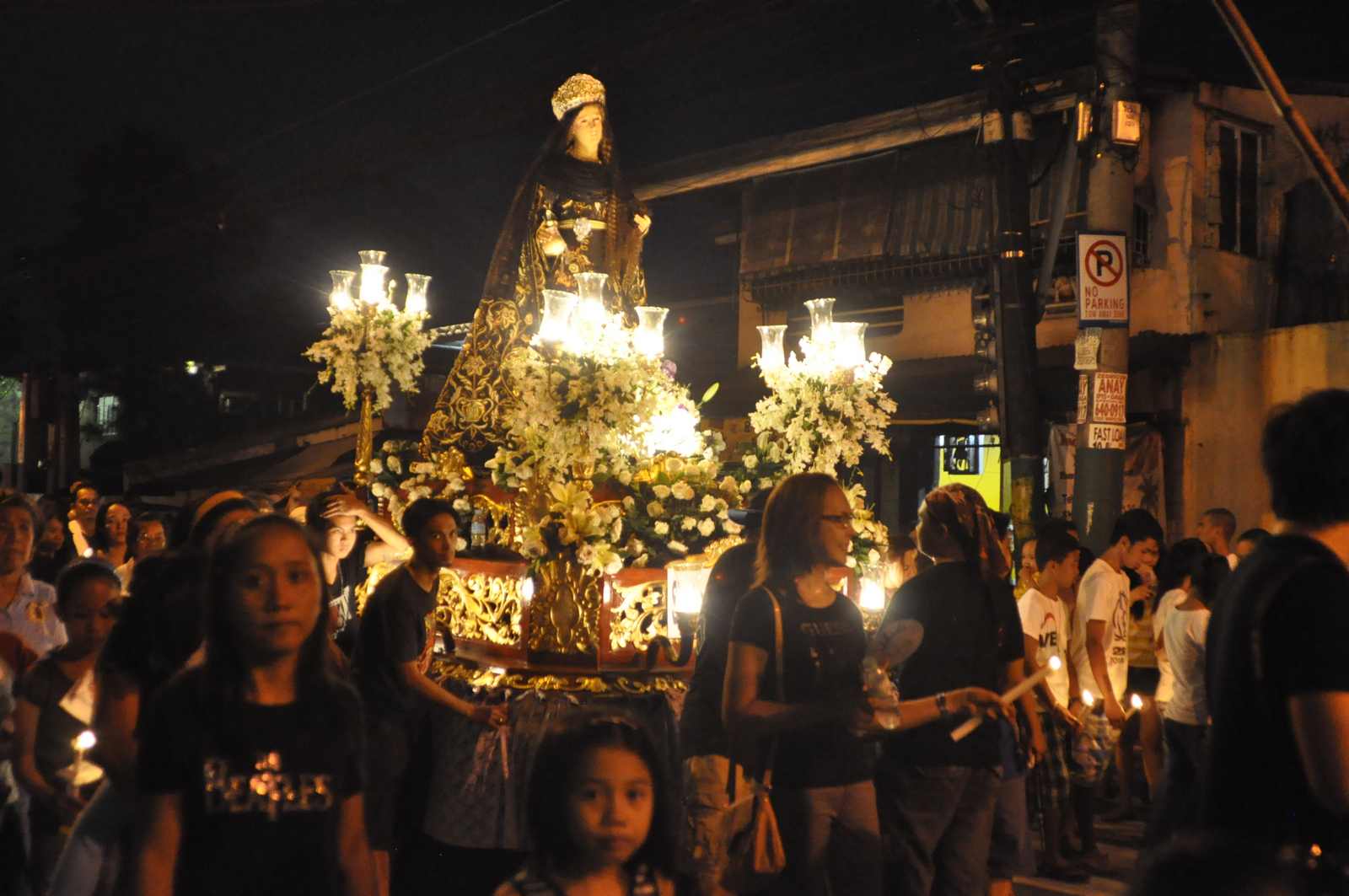Originally posted 2014-03-10 13:59:50.
The Goddess is a big deal in the Philippines and goddesses are out in strength there this week. The occasion is the closing rounds of the Universities Athletic Association of the Philippines (UAAP) women’s volleyball tournament, held at Smart Araneta Coliseum in Quezon City. Teams with names like De La Salle Lady Spikers and Ateneo de Manila Lady Eagles, the Tigresses, the Lady Warriors and the Lady Bulldogs battle it out in front of huge, enthusiastic and thoroughly partisan crowds. And these girls aren’t kidding; this is serious stuff.
The audience is mainly young – but everywhere in the Phils is mainly young. That’s only to be expected in a country where the population has increased by a factor of ten in fifty years. And there are as many men here as women. Filipinos are as passionate about volleyball as Scots are about football.
This is hard sport, and women are seen as true warriors.
It’s a quality of the Philippines that is so often forgotten. It doesn’t matter where you go here, strong, self-assured women are everywhere. Men, when you do see them, seem to be mainly the ubiquitous armed security men, taxi-drivers, tricycle-drivers, manual workers. Everywhere else, the face of the Philippines is a smiling woman with sparkling teeth.
Women here are completely unashamed of their sexuality and physical beauty and flaunt them all the time. Women are fully aware of their sexual power and unafraid of it. There is no sense here that women should be hidden away, as if their sexuality would corrupt.

However there is no doubt whom chooses the partner here; it’s the woman. Listening to any phone-in chat show quickly confirms this. Her sexual favours are hers to dispense, and in a culture that, despite its profound Roman Catholicism, increasingly affords women control over their own reproduction, their independence is clear. It is the men here who seem shy, bashful even, at least when in the company of women. Oh, Pinoy men are extremely friendly and love to party. You come across a bunch of guys and they’ll pull out a chair for you and four hours later, through a haze of Red Horse, you discover that these are your long-forgotten best buddies, an integral part of your life.
But if there’s a woman in the crowd, it’s different. They’ll shut up and let her invite you to sit. I had a fascinating illustration of this one afternoon in Laoag as I waited for a tricycle to take me into town. It was hot and there wasn’t much shade; my companion, perhaps wisely, had decided to take a siesta. A group of the hotel staff were sitting outside around a table, three men and one woman; like most Pinays she was tiny. Yet it was she who came over, insisted that I moved into the shade and fetched me some water. This was not subservience or some bizarre deference to a white Westerner, but because this was her space. Just by being there, she adopted it. The men were deferring to her, and obviously, courtesy demands that a stranger not be left standing in the afternoon heat.

I found this fascinating and began to look out for it… and the evidence was everywhere. On a jeepney, the driver of which is, as usual, a man, I am confused by the fare. There are men on the jeepney, but it is a woman who sees that I wish to ask something, and immediately takes control of the situation. ‘Hello sir,’ she says, a silence begging the question. ‘How much to Robinson’s?’ Without batting an eyelid, the woman, who is perhaps forty, replies, ‘16 pesos, sir.’ I count out the coins into her outstretched hand and she checks it, and passes it to the driver, accompanied by a flurry of Tagalog. He nods and drives. ‘He will stop for you sir,’ says the woman, reading my mind. She gets off two stops later, but sure enough, at the Robinson’s Mall, the driver says ‘tsup tsup’ and pulls over to let me off.
This is normal. Pinay women are assertive and strong, sexually confident, often with a high standard of education – 60% of graduates are women – who quietly but very firmly arrange the space around them. Combine this with a religion which puts the Goddess right at its heart, and the result is clear. If there is a modern, city-based culture where the Goddess walks, this is it.
I have many friends in the Philippines and a good few are on my Facebook contact list. Frequently they make some religious reference, and I usually check it out. One led me to a site where a well-known preacher was berating the people, saying that their form of Marianist Catholicism was what had brought successive natural disasters upon the Philippines. It made me think. Despite the obvious shortcomings of the logic, I could see what he was getting at. This is Goddess worship; there’s no place I know of where Inanna, Isis and the baby Horus are more deeply revered. Okay, so they changed their names but that means little. Archetypes, after all, are archetypes.
Furthermore, despite the prevalence of Roman Catholicism, the huge number of churches, the Jesus and Mary posters everywhere, the figurines and the Biblical texts, there is another cultural source that must not be ignored. The Philippines is in southeast Asia, and underlying the apparently Westernised, Christian worship is a strong and deep-rooted animism.
Animism is usually described simply as the belief that everything has a spirit that gives it life. This is only a partial truth, however. The basis of animism is Goddess worship. The Goddess is the Earth, and the trees, the rocks, the rivers, and the spirits that live within them are also part of the Earth, and of the Goddess. The Philippines has an extremely well developed mythology of fantastic creatures which emanate from the Goddess and haunt the night. The night, of course, is the time of the Goddess, and here walk the Aswang, the terrifying, shape-changing and bloodsucking beasts of Philippine folklore.
Of course, we can see immediate parallels in the cultures of southern Europe, and in the West, in Ireland, Scotland and elsewhere; what is Nessie but an Aswang with a Scottish accent? Yet in the West these things are increasingly fairy-tales rather than folklore, and very few people except in the most remote areas actually fear shape-shifters today.
Not so in the Philippines; while sophisticated Manila-dwellers sometimes turn their noses up at such rural beliefs, they are quickly caught in the lie. Every single Filipino I have known well enough to describe my home – which is a 16th century fortified town house with a spiral staircase and watch-tower complete with gun-ports – to, has, at some point in the conversation, earnestly asked, ‘Don’t you have any ghosts there? Are you sure?’ They’re not kidding. These spirits frighten them – and so they should, for they are terrifying.
The ‘chthonic swamp’ of the Goddess, as Camille Paglia put it, is very close here. Outside of the major cities, it’s even more so, of course. The Philippines population may have mushroomed over the last half-century, but it is still a huge land area and vast areas of virgin jungle still exist. And jungle is very much the home of the Goddess and her spirits, both fair and foul.
Taming the Goddess, it might reasonably be argued, is what civilisation is all about. One way that this is done is to incorporate her into a broader pantheon, and that is exactly what Catholicism does. Inanna is everywhere in the beautiful and sexually confident young women, who never shy from a stranger’s gaze and who are so direct and forthcoming. If a Pinay girl likes you, she will let you know. If she has to do business with you, she is polite and formal and absolutely not deferential. Isis is in all the mothers, the venerated ones. And she is mirrored in the faith: ‘Mama Mary pray for me’ is a mantra. The first point of contact isn’t Jesus or God but Mary, the Queen of Heaven, a title borne by both Inanna and Isis.
Why? Because the Goddess is dangerous. Preachers may rant about God sending catastrophe, but the people know better. God may be doing his damnedest to keep the wild, elemental forces of the Goddess at bay, but it’s a losing battle. The untrammelled force of creation that is unique to the Goddess, that makes woman and Earth sisters, is beyond any male control. Oh the jealous warrior-god may rant and rail, but his power is feeble compared to the Goddess’; and here the evidence is everywhere, for earthquakes still happen, typhoons still happen, tsunamis still happen, and at every turn the lesson is made plain: the Goddess takes back that which she has given.
But there’s a more direct route to protection, one hidden below centuries of violent repression but still very much alive: propitiate her. Venerate the Goddess and perhaps in her tempestuous and mercurial tantrums she will pass you by.
And this is exactly what happens. Hardly a week seems to go by in the Philippines but some sort of religious festival occurs, and at each, lovingly crafted representations of the Goddess are paraded through the streets of towns, villages and cities across the land. Everything stops; great cities like Manila grind to a halt, the traffic eerily silent – this is Asia, after all – as the drivers patiently wait for the processions to pass so that they may be on their way. Candles, universally, are the light of these exquisite expressions of devotion – for candles are fire, and fire was our first defence against the beasts that haunt the night.
Jesus himself is the sacrificial lamb – not to atone for some bizarre concept of ‘sin’ that the Goddess holds in utter contempt, but to the Goddess herself. We give you this man-god that you will love and protect us, and spare us in your anger. See how we have hoist his body high; he is our offering to you.
That is all Christianity has ever been: a recognition that the cult of the jealous Jewish sky-god is totally ineffective at protecting us, for the Goddess can still wreak havoc at her will. There is no idea of ‘freedom of choice’ or ‘free will’ in the sky-god allowing such human suffering; he allows it because he has no choice, for he is not in control. Instead, the Goddess is, and she always has been, as she remains today, untamed, for even with our fantastic technology we cannot control her. We are the fleas on her back, powerless to prevent her scratching, whose pathetic talisman, the sky-god, is useless at protecting us.
That is why the people pray to Mama Mary. They know who she is. They know that she is the Earth and the force that created all life on it. She can and does, take back what she gives, in the blind, undirected passion of her elemental dance. And the relationship of women to the Goddess is very clear; as She is powerful, so are They.
If nearly eight millennia of the subjection and suppression of women, to the point of total disenfranchisement and even forbidding them to allow themselves to be seen, proves one thing, it is this: it doesn’t work. Reducing half the population to second-class citizen (or worse) status by power of violence hasn’t changed a damn thing. Disasters still happen, and you and I will still die. The Goddess takes back what she has given, and no fanciful invention of men can stop her.





This article resonated with me, a Philippines born, American raised woman.
Thank you!